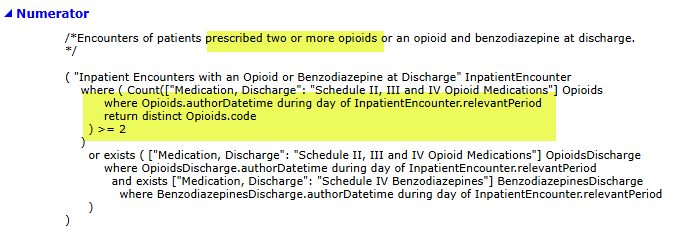-
Type:
Hosp Inpt eCQMs - Hospital Inpatient eCQMs
-
Resolution: Answered
-
Priority:
Moderate
-
Component/s: None
-
None
-
amanda enerson
-
memorial hermann health system
-
-
CMS0506v7
-
Need to see if we are counting patients in the correct population
Hello,
we have a patient that pulled into the numerator who had the same RX Norm code twice. The medication was ordered by a PA and then the next day by an MD. The prescribing instructions were different, but the same medication with the same RXNorm code was ordered. Based on the logic below, should this patient be in the numerator or denominator? Can an opioid medication with the same RX norm code used twice (prescribed twice) count for the numerator? What defines "prescribed two or more opioids" in the numerator?
